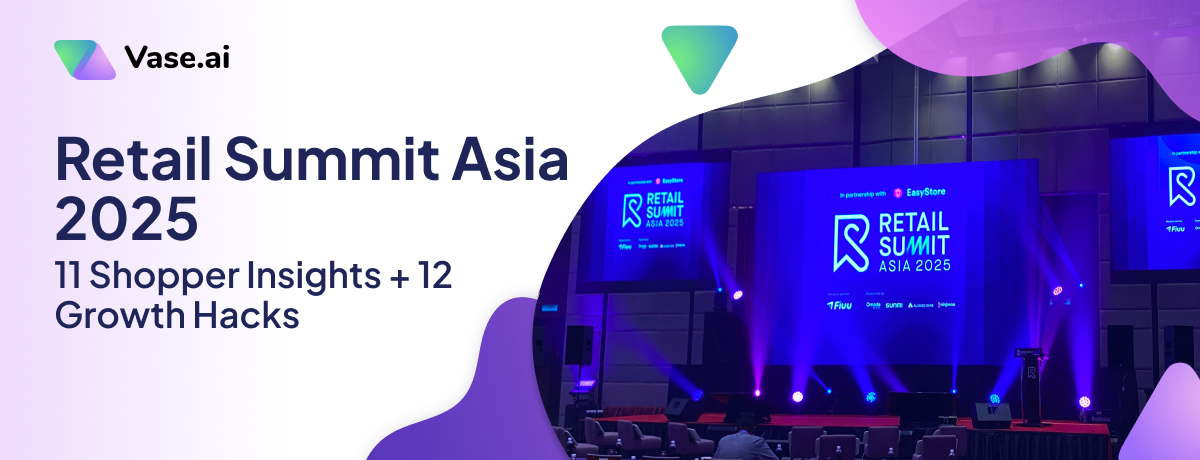Picture this: You've launched a product you're proud of. It's stylish, useful, and you expect success. Yet, sales are disappointing. What happened?
The problem might be a lack of understanding of your customers. This includes not just their age or shopping habits, but also their feelings, motivations, dreams, and hidden needs.
This is where qualitative research comes in. It's the key (or rather, “secret”) for businesses to meet customer desires. Let’s explore qualitative research in detail, why it’s something every business needs – and how to get started with it.
What is Qualitative Research?
At its core, qualitative research is about having direct, meaningful conversations with your target customers to uncover what truly drives them. This research goes beyond numbers and surface-data. It delves into the emotions, motivations, and behaviors that influence their decisions.
Picture sitting with a customer, coffee in hand. You ask about their experiences, frustrations, and desires. This is more than a yes-or-no survey. You pose open-ended questions like:
- "When was the last time you faced a challenge that our product could solve?"
- "What’s the most frustrating part about using products like ours?"
- "How do you feel when you think about our brand?"
This type of dialogue lets customers share their unfiltered thoughts. These are things they might not say in a standard survey – or even realize them until they’re asked.
When was the last time you talked to your target customers for an hour? Do you know what they’re truly doing with your product, what they think about your brand, or their deeper, inner motivations?
Qualitative research answers these questions. It helps grow your brand, product, and marketing. By listening to customers, you can improve designs, create better marketing, and build a brand connection.
This is what sets qualitative research apart—it’s not just about understanding what people do, but why they do it. This insight is key to standing out in a crowded market and driving revenue growth.
How Does Qualitative Research Drive Revenue Growth?
Qualitative research translates directly into action steps that grow your business:
Improved Products
For example, Dyson asked customers about their cleaning struggles at home. They learned customers couldn’t reach certain spots, so they designed innovative vacuum attachments to fix that—and sales went way up!
Sharper Marketing Strategies
Coca-Cola realized through focus groups that younger audiences wanted to feel more socially responsible. So, they made ads about recycling and being eco-friendly. Their campaigns like “World Without Waste” made more young people want to buy from them. This resulted in increased brand loyalty.
Better Customer Experience
An e-commerce brand conducted customer interviews and found out they hated the confusing checkout process. After making it easier, more people finished their purchases, and the store earned more money. With increased conversions, their revenue went up by 25%.
In short, qualitative research helps you use what you learn from customers to make better products, ads, and shopping experiences. This makes customers happier and more likely to buy from you, which means more sales and growth for your business.
How Quantitative and Qualitative Research Work Together
Quantitative research gives you the numbers—like “50% of users abandoned their shopping cart”—showing what is happening. But to truly understand why it’s happening, you need qualitative research. It uncovers the reasons behind those numbers. For example, “Users abandoned their carts because the checkout process was confusing or they couldn’t trust the payment options.”
In other words, quantitative research shows you the numbers and patterns, like how many people left their cart behind, while qualitative research helps you understand why that happened by digging into what customers really feel and think.
When you use both together, you get the full picture, so you can make better choices, improve your products, and give customers what they really want.
Using both kinds of research helps businesses stop guessing and start making smart moves, which leads to better results and more sales.
Putting Qualitative Research into Practice
Let’s say you run an Ecommerce business, and your data shows a low conversion rate on product pages despite high traffic.
You could:
- Assume it’s a pricing issue and offer discounts.
- Conduct qualitative research to uncover the real barriers.
Through qualitative research—such as interviews with past customers or live usability tests—you discover two key insights:
- Key Insight #1: Customers find the product descriptions too generic and lacking details about materials, dimensions, or real-life usage.
- Key Insight #2: Many users are hesitant because they can’t see enough authentic reviews or photos from real customers.
Using this information, you redesign your product pages to:
- Add more detailed and specific descriptions, including FAQs to address common questions.
- Integrate a section featuring user-generated content, such as customer reviews and photos.
- Add a guarantee for your product.
The result? Customers feel more confident, complete their purchases and your revenue increases.

Mattress company Sonno adds a 100-night trial for the mattress for this reason.
Qualitative research isn’t just for online stores. It can be applied to other business niches as well.
Let’s break this down with another example to show how qualitative research can help ensure a successful product launch.
Imagine you’re about to release a fitness app. A recent survey you did revealed that 60% of users want a “custom workout plan” feature. That’s a significant percentage, so you prioritize it in your product roadmap. Sounds promising, right?
But here’s the potential pitfall: You don’t know why they want it.
- Is it because users are frustrated with generic workout plans available on other apps?
- Is it because they are not getting results without a workout plan?
- What’s stopping them from watching the many videos on YouTube?
- Do they have specific fitness goals that standard plans don’t address?
- Or are they just saying “custom plans” because it sounds trendy, but they don’t fully understand how it works?
Without knowing the answers to these questions, you’re making assumptions—and assumptions can lead to costly missteps.
So you conduct interviews with potential users, and you learn that 40% want personalized plans to stay motivated and fit workouts into their busy schedules, 20% have tried similar features elsewhere but found them too generic to meet their needs, and 30% don’t know how to create their own workout plans.
Based on these insights, you refine the “custom workout plan” feature to offer truly personalized, flexible plans tailored to individual schedules and fitness goals. Then you tweak the product positioning to highlight how your product helps users to stay motivated.
Qualitative Research Methods
Interviews are not the only way to do qualitative research. Let’s explore the different ways to do qualitative research.But here’s the potential pitfall: You don’t know why they want it.
1. Interviews
Interviews are one-on-one discussions designed to gain deep insights from an individual. They’re perfect for getting detailed feedback, understanding unique experiences, and identifying specific pain points.
Example:
A software company interviews users to understand why they struggle with a new dashboard. One user explains, “I couldn’t find the ‘help’ button because it was buried in a submenu. I felt frustrated and gave up.” This insight helps the company redesign the interface to make help resources more accessible.
2. Focus Groups
Focus groups bring together a small group of participants to discuss ideas, share feedback, or react to a concept. The interactive nature of focus groups can uncover group dynamics and shared experiences that individual interviews might miss.
Example:
A food brand conducts a focus group to test packaging designs. During the session, participants realize they all struggle to open resealable bags. This shared frustration sparked a discussion about alternatives, ultimately leading the brand to adopt a more user-friendly design.
3. Ethnographic Research
Ethnographic research involves observing customers in their natural environment—their homes, workplaces, or wherever they interact with your product. This method is invaluable for understanding behavior that customers might not articulate in a conversation.
Example:
A furniture company observes families using their living room furniture. They notice parents frequently sit on the floor while playing with kids, despite having a sofa nearby. This insight leads to a new line of modular, floor-level seating designed for family activities.
4. Open-Ended Surveys
Open-ended surveys let participants answer in their own words, sharing detailed opinions. Though less interactive than interviews, they efficiently collect diverse perspectives.
Example:
An online retailer includes an open-ended question at the end of a survey: “What would make your shopping experience easier?” One respondent mentions wanting a virtual fitting room feature, leading the company to explore augmented reality solutions.
Start Your First Qualitative Research Campaign with Vase.ai
If you're overwhelmed by the need for qualitative research to better understand your customers, don't worry. We've got you covered.
Our new quantitative research service will help you discover your customer’s deepest desires, dreams, and goals – helping you uncover complex issues, test your ideas, and gain in-depth insights so you can drive meaningful decisions for your business.
With Vase.ai’s qualitative research service, you can:
1. Conduct In-Depth Interviews
Speak directly to your customers to gain a deeper understanding of their needs, challenges, and preferences. For example, learn why customers abandon their carts or what motivates them to stay loyal to a competitor.
2. Analyze Customer Emotions
Uncover the emotions driving your customers’ choices— what excites them about your product or frustrates them about competitors—so you can connect with them on a meaningful level or tweak your products to win more customers.
3. Validate Your Ideas
Use real customer insights to refine your products or services before launch, ensuring they resonate with your audience and solve their real problems.
Imagine the power of knowing exactly why your customers choose a particular brand, what improvements they’d love to see in your products or the day-to-day challenges they wish someone would solve.
Vase.ai doesn’t just put you into a conversation with participants. Every conversation is moderated by experienced researchers who will ensure a focused discussion to retrieve meaningful insights.
After the session, you will receive comprehensive reports, insights, and actionable recommendations that you can apply to your product or business to see immediate revenue improvements.
Here’s an example of how it works:
Imagine you are a skincare brand planning to launch a new moisturizer.
- Use Vase.ai to organize a focus group with diverse participants.
- Ask open-ended questions like, “What do you struggle with when choosing moisturizers?”
- Our team of expert researchers analyzes the data and shares insights like:
- Customers want eco-friendly packaging.
- Many feel existing moisturizers leave a sticky residue.
- They’re overwhelmed by brands that over-promise results.
Now, instead of guessing your launch, you have a clear direction: Position the moisturizer as an eco-friendly, lightweight moisturizer with honest marketing.
Final Thoughts
Understanding your customers isn’t just a nice-to-have—it’s a must-have.
Remember, that the success of your business depends on one thing – sales from your customers. Qualitative research provides you with hidden insights that you can never get anywhere else by connecting with your potential customers on a deep, empathetic level.
That’s why it’s the secret sauce to differentiating your brand.
It’s time to stop guessing and start knowing.






